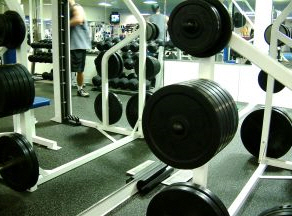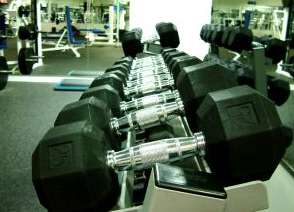 Sports specific weight lifting routines are often an important adjunct to an athlete’s performance, whether they are high school, college or professional. Even younger athletes can incorporate the use of weight training into their programs with the assistance of a personal trainer who has specific knowledge of weight training and children.
Sports specific weight lifting routines are often an important adjunct to an athlete’s performance, whether they are high school, college or professional. Even younger athletes can incorporate the use of weight training into their programs with the assistance of a personal trainer who has specific knowledge of weight training and children.
In a baseball weight training program, the end goal isn’t to bulk up or even to use maximal strength. Instead it is to develop explosive power and motion. Baseball, often called a statistician’s sport, requires the athletes to be able to move from 0 to 60 in seconds. There is no running start or continual movement. Batters, and runners on base, sprint from a standing position in an explosive manner to avoid being tagged out. A baseball weight training program will help the athlete accomplish just that goal.
These training programs assume that you have had medical clearance from your doctor to perform these exercises and that you have access to trainers who can teach you how to do the moves correctly without increasing your chances of injury.
The program is broken up into different phases depending upon the season of the year. In the early pre-season, the athletes will weight lift 2-3 times per week with at least 48 hours between sessions. The goal in pre-season is develop foundational strength using their body weight or weights at 50% of maximum. They will do 15-20 repetitions and 2-3 sets in order to prepare their body for an excellent season.
 During the mid- pre-season the athlete will begin to incorporate heavier weights for less repetitions and more sets. This develops maximal amount of strength. Never just jump into a strength training program since your real goal is to stay injury free. It’s not effective if you’re injured and miss the entire baseball season. At this stage of the baseball weight training program it’s important to use a spotter for safety, even if you are an experienced lifter.
During the mid- pre-season the athlete will begin to incorporate heavier weights for less repetitions and more sets. This develops maximal amount of strength. Never just jump into a strength training program since your real goal is to stay injury free. It’s not effective if you’re injured and miss the entire baseball season. At this stage of the baseball weight training program it’s important to use a spotter for safety, even if you are an experienced lifter.
Now the athlete is ready to convert this strength to power specific to the sport. Baseball movement patterns consist of throwing, hitting and sprinting short distances. At this point the athlete will move from maximal weight to lighter weights they can move explosively through the motion. This happens approximately 3 weeks before the beginning of the season and uses the body weight or 50% of max weights and a medicine ball. Some plyometric exercises can be incorporated. After having lifted heavier weights this part of the program may leave you feeling like you could do more – don’t! The important factor here is to train your muscle fibers to react quickly and explosively – not to build bulk and muscle mass.
During the baseball season the weight training program doesn’t end. At this time the athlete aims to maintain the strength and power he gained in the off season. It takes less time and effort to maintain a level of fitness than to develop it. Now you can cut your baseball weight training program down to 1-2 times per week. Avoid any weight training the day before a game.
At the end of the season be sure to give your body a break before starting up again for the following season. Don’t take off completely though! You can incorporate some light circuit training or cardiovascular routines such as running, rowing, trampoline or jump roping.
Resources:
Mens Fitness: Five-Tool Baseball Player Workout
http://www.mensfitness.com/training/build-muscle/five-tool-baseball-player-workout
Huskers: Summer Workout
http://www.huskers.com/pdf8/847246.pdf
Sport Fitness Advisor: A Comprehensive Baseball Weight Training Program
http://www.sport-fitness-advisor.com/baseball-weight-training.html
EricCressey: It Needs to be Said: Throwing Doesn’t Build Arm Strength
http://www.ericcressey.com/tag/weight-lifting-for-baseball
Active: Baseball
http://www.active.com/baseball/articles/baseball-strength-and-conditioning-101
Sports Fitness Solutions: Weight Training and Baseball
http://www.sports-fitness-solutions.com/baseball-weighttraining.html


Leave a Reply